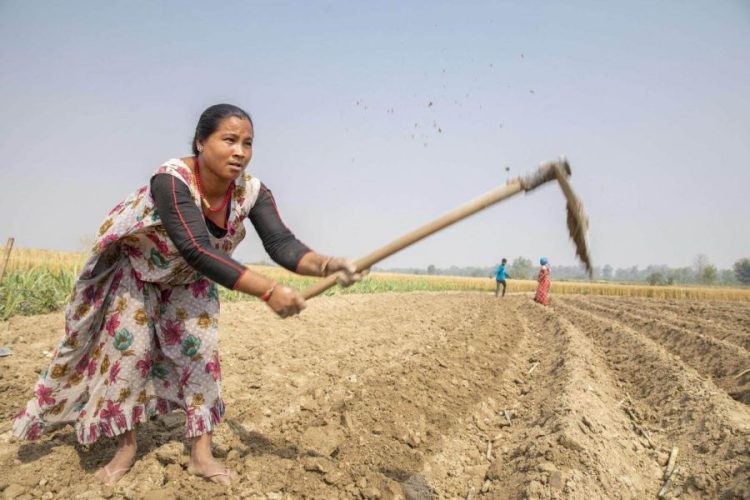The ‘Sustainable Development In Practice’ Brings The World A Step Closer To Realising The SDGs 2030

Categories :
According to the latest research, it is crucial to realise the objectives of the 2030 Agenda with proactive engagement of political leaders and a strong commitment to science-driven transformations. This requires collective action on a global scale, ensuring that no nation, community, or individual is left overlooked or excluded. ‘Sustainable Development in Practice: A Handbook for Integrating Environment, Climate, and Poverty Reduction’ is a comprehensive guide that offers a roadmap for policymakers and practitioners to navigate the complex terrain of poverty-environment integration.
Developed through the collaborative efforts of the United Nations Development Programme (UNDP) and the United Nations Environment Programme (UNEP) Ecosystems Integration, under the leadership of Michael Stanley-Jones at the UN Alliance for Sustainable Fashion Secretariat, this handbook provides invaluable insights into the intersection of environmental sustainability, climate action, and poverty eradication.
The Poverty-Environment Action Sustainability is a compilation of resources that facilitates a seamless integration of poverty and environment concerns into national and sectoral policies and programs. Funded by entities such as the Australian Development Cooperation, the Norwegian Ministry of Foreign Affairs, UK Aid from the British People, and more, this report offers a diverse range of tools and information to support the alignment of environmental sustainability and climate objectives with poverty eradication goals.
The policy brief derived from the Poverty-Environment Initiative and UNEP’s Poverty-Environment Action, the report brings forth some key points that encompass the challenges posed by fragmented institutional structures. It emphasises the need to build trust as a foundation for integration, the critical importance of addressing gender and inequality, and the value of adopting integrated approaches.
It also outlines a practical organising framework for integration, revolving around the decision-making cycle of planning, budgeting, investing, executing, monitoring, review, and dialogue.
The Poverty-Environment Action Sustainability: A holistic approach for a complex world
Our world is facing a web of interconnected crises, ranging from the pressing issue of climate change to the ongoing challenges of poverty and environmental degradation. Addressing these multifaceted challenges in isolation is no longer a viable option. Instead, integrated approaches offer a promising way forward, allowing us to confront these complex issues with comprehensive and multifaceted solutions.
The history of calls for integration dates back over half a century, resonating from the 1972 UN Conference on the Human Environment to subsequent global development commitments. However, translating these calls into practice has often proved elusive. Nevertheless, the handbook draws from the evolving strategies of progressive environmental and development institutions, which have transitioned from siloed approaches to embracing synergies and seeking fully integrated sustainable development.
The imperative to adopt an integrated approach to poverty reduction, environmental sustainability, and climate action has never been more apparent. In a world grappling with interconnected crises, from climate change to poverty and environmental degradation, addressing these issues in isolation is no longer viable. Integrated approaches offer a path forward, enabling us to tackle complex challenges with multifaceted solutions.
A Handbook for Real-World Impact
The newly unveiled PEA Handbook, "Sustainable Development in Practice: A Guide to Integrating Environment, Climate, and Poverty Reduction," provides a detailed roadmap for every step of the integration process.
From planning to budgeting, investing to executing, monitoring to review, and fostering dialogue, this guide offers tasks, tools, and tactics to empower policymakers and practitioners.

Hernaldo Turrillo is a writer and author specialised in innovation, AI, DLT, SMEs, trading, investing and new trends in technology and business. He has been working for ztudium group since 2017. He is the editor of openbusinesscouncil.org, tradersdna.com, hedgethink.com, and writes regularly for intelligenthq.com, socialmediacouncil.eu. Hernaldo was born in Spain and finally settled in London, United Kingdom, after a few years of personal growth. Hernaldo finished his Journalism bachelor degree in the University of Seville, Spain, and began working as reporter in the newspaper, Europa Sur, writing about Politics and Society. He also worked as community manager and marketing advisor in Los Barrios, Spain. Innovation, technology, politics and economy are his main interests, with special focus on new trends and ethical projects. He enjoys finding himself getting lost in words, explaining what he understands from the world and helping others. Besides a journalist, he is also a thinker and proactive in digital transformation strategies. Knowledge and ideas have no limits.









